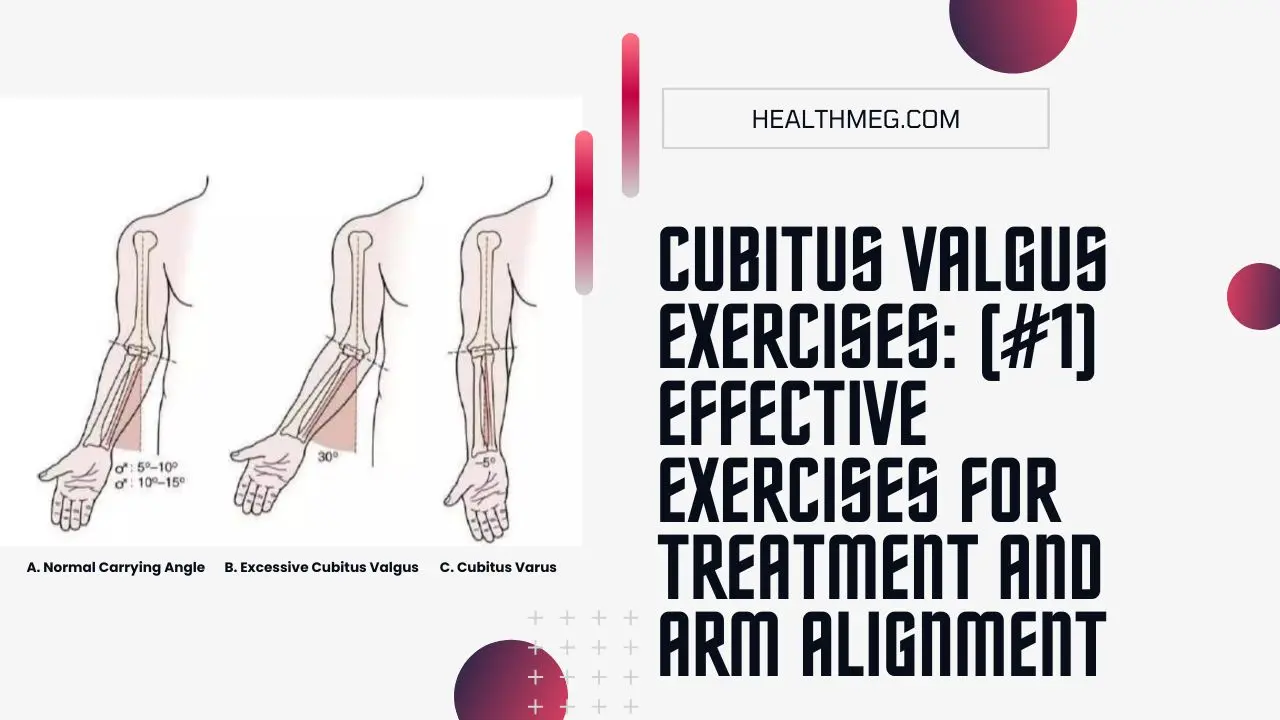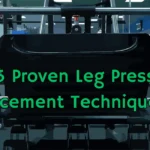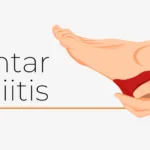Introduction
Cubitus valgus, also known as carrying angle deformity, is a condition where the angle formed at the elbow between the arm and forearm is wider than normal. This leads to the arm appearing to bend outward at the elbow. The carrying angle is normally between 5 to 15 degrees. In cubitus valgus, the angle is wider, usually over 15 degrees.
This post will cover what causes a carrying angle deformity, its symptoms and effects, and provide a complete guide to cubitus valgus exercises for correction and treatment options. By the end, you’ll understand everything you need to know to improve elbow alignment and arm function.
Do read the People Also Ask (FAQs) about this topic.
Key Takeaways
- Untreated severe cubitus valgus can cause elbow arthritis and disability over time
- Targeted stretching/strengthening exercises help realign the elbow and improve function
- Elbow bracing, therapy, and lifestyle changes enhance non-surgical treatment
- Surgery may still be needed for some advanced, longstanding cases
- Early intervention with conservative treatment produces an optimal correction
What Causes Cubitus Valgus?
A carrying angle deformity usually develops gradually over time, but can have a variety of causes:
- Genetics – Some people are simply born with greater carrying angles. Cubitus valgus can run in families.
- Injuries – Any injury, fracture, or dislocation around the elbow can damage growth plates or soft tissues and cause abnormal bone development. This is common if an injury occurs in childhood.
- Fluid buildup during growth spurts – Carrying angles can increase as bones lengthen rapidly during adolescence. Extra fluid around the elbow joint from inflammation can contribute.
- Muscle imbalance – Weak external rotator and flexor muscles allow the elbow to bend outwards excessively. This places more stress on inner elbow structures.
- Bone conditions – Metabolic bone disorders, infection, arthritis, or tumours around the elbow can all trigger deformation over time.
Symptoms of Cubitus Valgus Deformity
Many people have no symptoms or limitations from cubitus valgus other than the bent arm appearance itself which some find unsightly. In more severe cases, cubitus valgus can contribute to:
- Stiffness, pain, or soreness in the elbow or arm
- Loss of flexibility and range of motion
- Nerve irritation or tingling down the forearm (ulnar neuropathy)
- Increased risk of arthritis due to uneven joint loading
- Difficulty performing tasks requiring straightened arm
If you experience any of these cubitus valgus symptoms, correction exercises and treatment can help recover strength and function.
Dangers of Allowing Cubitus Valgus to Worsen
While mild cases may not progress or cause dysfunction, severe untreated cubitus valgus can worsen over time leading to:
- Accelerated elbow arthritis due to more pressure on the inner joint
- Possible need for surgery if conservative treatment fails
- Limitations and disability affecting the quality of life
This highlights the importance of early intervention with physical therapy and targeted exercises before the deformity advances too far.
Cubitus Valgus Exercises for Correction and Treatment (Which exercises are useful to reduce cubitus valgus angle?)
The good news is cubitus valgus can often be corrected through conservative treatment, especially in children and teenagers while the bones are still growing. Here are the best cubitus valgus exercises and therapies:
- Stretching Exercises for Cubitus Valgus
- Strengthening Exercises for Cubitus Valgus
- Elbow Bracing
- Physical/Occupational Therapy
- Lifestyle Modifications
- Surgery for Severe Cubitus Valgus
1. Stretching Exercises for Cubitus Valgus
Gently stretching both the elbow joint and surrounding muscles helps improve flexibility, alignment, and function. Try these cubitus valgus stretches:
- Extended elbow stretch – Straighten the affected arm fully, and press the back of the hand against the wall lightly until the stretch is felt through the elbow. Hold 30 seconds, relax, repeat 5 times.
- Across-body elbow pull – Bend the affected elbow, place the opposite hand on the outside of the elbow, and gently pull the elbow inwards across the body until stretch is felt. Hold for 30 seconds, relax, repeat 5 times.
- Forearm pronation/supination stretches – Extend the affected arm straight out. Slowly rotate your palm down then up as far as comfortable 10 times.
- Wrist flexor/extensor stretch – With arm extended straight, gently pull hand upwards then downwards with opposite hand until stretches felt. Hold 30 seconds each way.
For best results, perform stretches 2-3x daily. Overtime carrying angle should decrease as flexibility improves.
2. Strengthening Exercises for Cubitus Valgus
Complement stretching by targeting weak muscles around the elbow:
- Wrist curls – Hold weight or resistance band handle, bend wrist up and down slowly 15 times. Builds wrist flexors.
- Reverse wrist curls – Weigh or band handle in palm face down, curl hand upwards then lower 15 times. Works wrist extensors.
- Ulnar side wrist deviation – Attach the band to a fixed point, grip the handle palm up, and pull the hand outwards against resistance 15 times working ulnar deviations.
- External rotation – Stand with the affected elbow fixed at the side, hold the resistance band/cable handle, and rotate the forearm outwards 15 times. Strengthens external rotators.
Aim for 2-3 sets of 15 reps for each exercise 2-3x weekly. Increase resistance gradually as muscles get stronger.
3. Elbow Bracing
Wearing a padded elbow brace applies gentle pressure encouraging the elbow inward towards proper alignment while also stabilizing the joint. Bracing is especially helpful at night as it prevents the arm from splaying outward during sleep which can worsen deformity. Just ensure the elbow is not braced constantly – breaks are needed for movement.
4. Physical/Occupational Therapy
Seeing a physical or occupational therapist skilled in paediatrics and upper body treatment allows the personalization of an exercise program targeting each patient’s specific musculature weaknesses and movement limitations. Therapists also utilize specialized techniques like joint mobilization and myofascial release to loosen tissues and restore optimal elbow biomechanics. Often only 6-8 weeks of targeted therapy restores substantial elbow function.
5. Lifestyle Modifications
Simple daily adjustments to reduce elbow strain can enhance recovery:
- Avoid leaning on the bent elbow for prolonged periods
- Prevent the arm from splaying outward when sleeping by propping a pillow under the arm
- Use proper technique and reduce weight/reps if weightlifting
- Take frequent breaks when doing repetitive tasks involving elbow flexion
Making these cubitus valgus-friendly changes helps improve the effects of active treatment methods.
6. Surgery for Severe Cubitus Valgus
In serious cases, unresponsive to conservative treatment for at least 6 months, cubitus valgus surgery may be required. This could involve:
- Bone removal/reshaping (osteotomy) to realign elbow
- Soft tissue releases/tightening to balance joint forces
- Growth plate stapling in young patients to control bone growth
- External fixation devices to gradually straighten the elbow over time
Though a last resort, surgery for chronic severe cubitus valgus can substantially realign the elbow and provide permanent improvement in appearance and function.
Conclusion
Performing targeted cubitus valgus exercises consistently is key to straightening elbow alignment, improving flexibility/strength, reducing pain and arthritis risk, and resolving functional limitations so surgery can be avoided. But don’t hesitate to see an orthopedist or hand therapist if home treatment fails to produce improvement after a few months. The earlier carrying angle deformity is addressed, the quicker positive results are achieved.
People Also Ask (FAQs)
Q: How long does it take for cubitus valgus correction exercises to work?
A: Most patients notice some improvement in elbow alignment, flexibility, and strength after 6-8 weeks of targeted stretching and strengthening. However optimal correction of deformity may take 3-6 months of consistent therapy.
Q: At what carrying angle is surgery recommended for cubitus valgus?
A: There is no definitive angle requiring surgery. It depends on factors like skeletal maturity, rate of deformity progression, arthritis development, and functional impairment. Surgery decisions are made jointly with orthopaedic specialists.
Q: Can I prevent cubitus valgus in my child?
A: Not necessarily. While properly treating childhood elbow injuries can help, some genetically predisposed children develop carrying angle deformities regardless of preventative steps. Early diagnosis and consistent conservative treatment provide the best opportunity for non-surgical correction.
Q: Which exercises are useful to reduce the cubitus valgus angle?
A: Some important exercises that can help reduce the cubitus valgus angle are:
- Stretching Exercises for Cubitus Valgus
- Strengthening Exercises for Cubitus Valgus
- Elbow Bracing
- Physical/Occupational Therapy
- Lifestyle Modifications
- Surgery for Severe Cubitus Valgus












